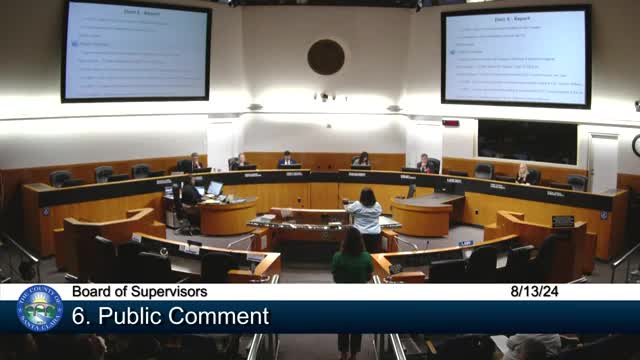Synthetic grass advocates fight back against turf ban
August 13, 2024 | Santa Clara County, California
This article was created by AI summarizing key points discussed. AI makes mistakes, so for full details and context, please refer to the video of the full meeting. Please report any errors so we can fix them. Report an error »

During a recent government meeting, community members voiced strong opposition to a proposed ban on synthetic grass, highlighting its benefits and the potential negative impact on local youth sports. Elizabeth Allen, representing a natural landscape and synthetic grass warehouse, argued that advancements in synthetic grass technology have transformed it from a mere substitute to a viable alternative to natural grass. She emphasized that synthetic grass can save up to 55 gallons of water per square foot annually, a crucial consideration amid California's ongoing water shortages.
Allen also addressed concerns regarding the safety of synthetic grass, noting that it contains significantly lower levels of PFAS compared to common household items, such as dental floss. Her comments aimed to counteract fears surrounding the environmental and health implications of artificial turf.
Andrea Smith, a mother of a hearing-impaired soccer player, shared her personal experiences with the impact of turf field availability on youth sports. She argued that removing turf fields would not only hinder team sports but also disproportionately affect lower-income families who may struggle with increased club fees and limited access to playtime. Smith recounted the challenges her daughter faced on natural grass fields, including injuries and cancellations due to poor field conditions.
The discussions underscored the community's concerns about the implications of the proposed ban, particularly regarding water conservation, safety, and equitable access to sports for all children. As the meeting progressed, the need for further consideration of these factors became evident.
Allen also addressed concerns regarding the safety of synthetic grass, noting that it contains significantly lower levels of PFAS compared to common household items, such as dental floss. Her comments aimed to counteract fears surrounding the environmental and health implications of artificial turf.
Andrea Smith, a mother of a hearing-impaired soccer player, shared her personal experiences with the impact of turf field availability on youth sports. She argued that removing turf fields would not only hinder team sports but also disproportionately affect lower-income families who may struggle with increased club fees and limited access to playtime. Smith recounted the challenges her daughter faced on natural grass fields, including injuries and cancellations due to poor field conditions.
The discussions underscored the community's concerns about the implications of the proposed ban, particularly regarding water conservation, safety, and equitable access to sports for all children. As the meeting progressed, the need for further consideration of these factors became evident.
View full meeting
This article is based on a recent meeting—watch the full video and explore the complete transcript for deeper insights into the discussion.
View full meeting
